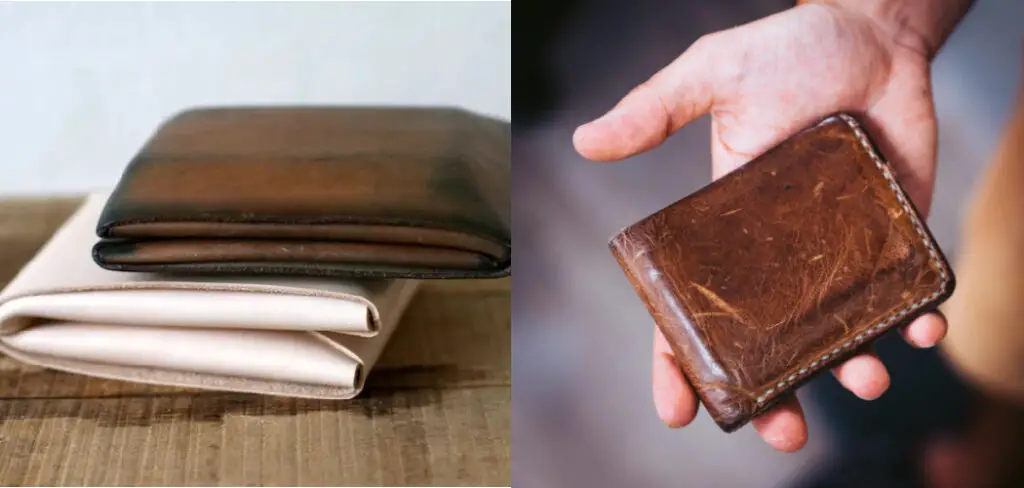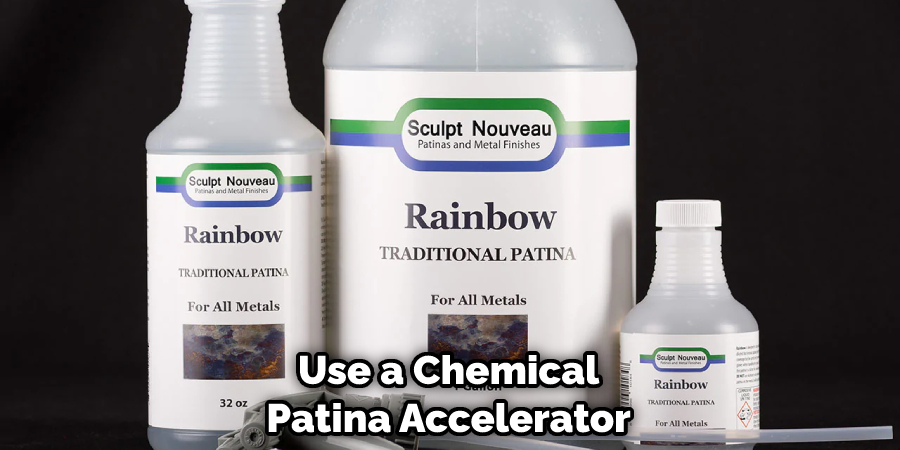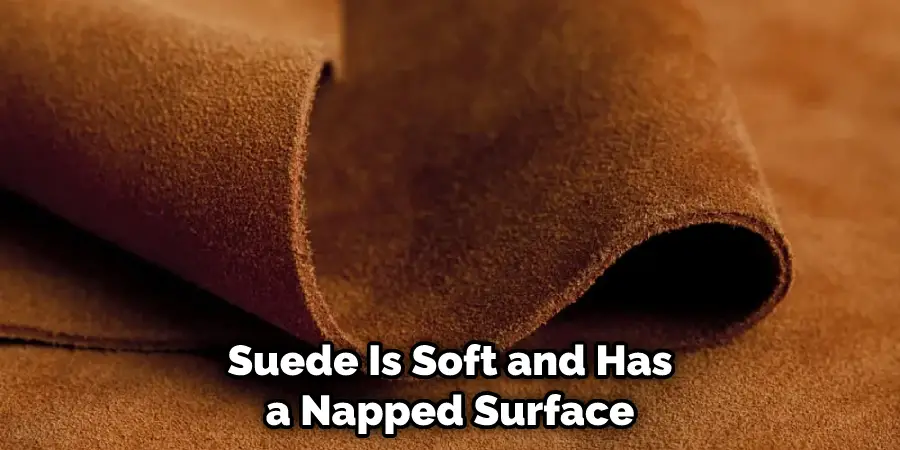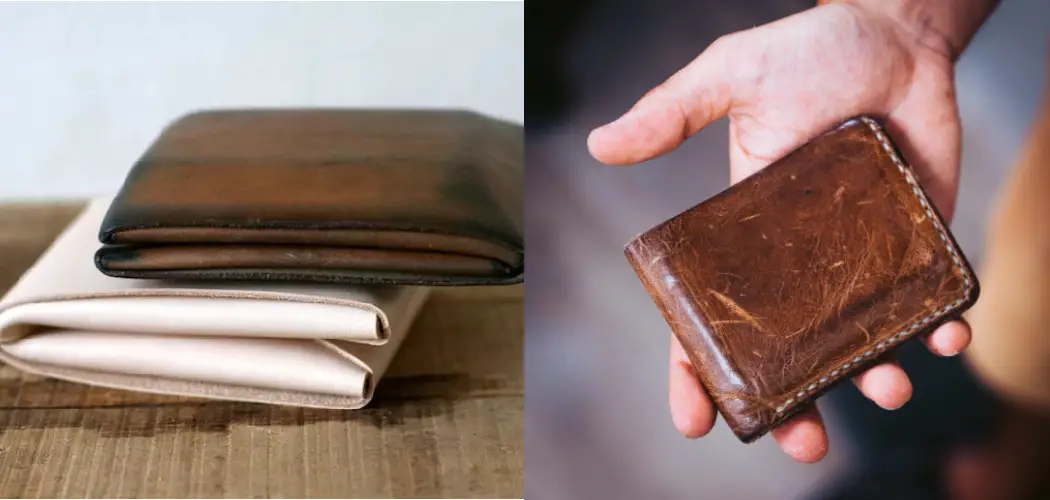There is nothing like the natural patina of the leather. It develops over time as the leather ages and can create a unique and beautiful look. Unfortunately, if you want to create a patina on leather quickly, there is no definitive method.

Are you looking for a way to speed up the patina leather process? Whether you’re new to leatherworking or just looking for a shortcut, this guide will show you how to patina leather faster using simple steps. With a bit of practice, you’ll be able to create beautiful, natural-looking finishes in no time!
What is Patina Leather?
Patina leather is simply leather that has been left to age naturally. Creating patina leather is simple: expose the leather to the elements ( sun, wind, and rain), and over time it will develop a unique finish.
11 Effective Tips on How to Patina Leather Faster
You can follow some simple tips to patina leather faster. First, be sure to clean the leather before you start, and then use a consistent method each time you work on it.
Tips 1: Apply a Thin Layer of Olive Oil
Olive oil can speed up the patina process on leather. First, apply a thin layer of olive to the surface of the leather, allowing it to sit for several hours. Then buff away any excess oil with a soft cloth. Repeat this process every few days until you achieve the desired color.
Tips 2: Use a Hairdryer
Applying heat to leather can also help speed up the patina process. Simply use a hair dryer to blast the surface of the leather for a few minutes each day. Be sure to keep the hairdryer moving, so you don’t overheat any one spot on the leather. Also, test the heat on a small leather area first to ensure it won’t damage the material.

Tips 3: Place the Leather in Direct Sunlight
Leather exposed to direct sunlight will develop a patina faster than those kept in the shade. If you want to speed up the process, place your leather goods in a sunny spot for a few hours each day. UV rays will help to darken the leather and create a beautiful patina.
Tips 4: Use a Commercial Leather Patina Kit
You can use a commercial leather patina kit if you want professional-looking results. However, these kits typically contain chemicals that accelerate the patina process. Wear gloves and eye protection when working with these products.
Tips 5: Make Your Leather Patina Solution
If you’re looking for a more natural way to patina leather, you can make your own solution home. Simply mix equal parts vinegar and water in a spray bottle and spritz the mixture onto the surface of the leather. Next, allow the leather to air dry in a sunny spot. Repeat this process every few days until you achieve the desired patina color.
Tips 6: Use Coffee or Tea
Coffee and tea can also be used to create a patina on leather. Simply brew a pot of coffee or tea and allow it to cool. Then, using a clean cloth, apply the liquid to the surface of the leather. Allow the leather to air dry in a sunny spot. If you want to darken the leather further, you can repeat this process several times.

Tips 7: Use a Black Sharpie
If you want to quickly create a dark patina on leather, you can use a black Sharpie. Simply color the surface of the leather with the Sharpie and allow it to dry. The link will help to darken the leather and create a beautiful patina. But remember, this method is not permanent, so you’ll need to reapply the Sharpie every few days to maintain the color.
Tips 8: Use Ashes
Another quick way to create a patina on leather is to use ashes. Simply rub the ashes onto the surface of the leather and allow them to sit for a few hours. Then, brush off any excess ashes and buff the leather with a soft cloth. You must ensure that the ashes are completely extinguished before applying them to the leather. Otherwise, you could end up with a fire.
Tips 9: Use Shoe Polish
Shoe polish can also be used to create a patina on leather. Simply apply a thin layer of shoe polish to the surface of the leather and allow it to dry. After some time, buff the leather with a soft cloth to shine. This method will help to darken and protect the leather. But this is not a permanent solution, so you’ll need to reapply the shoe polish every few days.
Tips 10: Use a Chemical Patina Accelerator
If you want to achieve professional-looking results, you can use a chemical patina accelerator. These products typically contain chemicals that accelerate the patina process. Follow the instructions carefully and always wear gloves and eye protection when working with these products.
These are the commonly used methods to patina leather faster. Try out a few of these tips and see how quickly you can achieve the desired patina color.

What Leather Gets Best Patina?
There are many types of leather, each with its unique grain and texture. Depending on the look you’re going for, some leathers will develop a better patina than others. For example, full-grain leathers are the most durable and will age the best over time. But if you’re looking for a softer, more vintage look, then top-grain or corrected-grain leathers might be a better option.
Here are some of the best leathers for developing a beautiful patina:
Full-Grain Leather:
This high-quality leather is available and will age the best over time. Full-grain leather is made from the entire hide, including the outermost layer of skin. This makes it more durable and resistant to wear and tear.
Top-Grain Leather:
Top-grain leather is made from the outermost layer of skin, which has been sanded or buffed to remove any imperfections. This makes it thinner and softer than full-grain leather and more susceptible to damage.
Corrected-Grain Leather:
Corrected-grain leather has been buffed and sanded to remove imperfections, then embossed with a synthetic grain. This makes it more uniform in appearance but less durable than full-grain or top-grain leathers.
Suede:
The suede is made from the innermost layer of skin, which is split into thin strips. As a result, it’s very soft and has a napped surface prone to staining. And also, it tends to absorb water, so it’s not the best option for wet weather.

Nubuck:
Nubuck is made from the top layer of skin sanded or buffed to create a velvety surface. It’s very durable but can be challenging to clean. That’s why casual footwear like sneakers or loafers are often used.
Aniline Leather:
Aniline leather is dyed with natural dyes that penetrate the entire hide. This makes it very soft and supple but also susceptible to staining. So, aniline leather is a good option if you’re looking for a leather that will develop a deep, rich patina over time.
Semi-Aniline Leather:
Semi-aniline leather is dyed with soluble dyes and given a thin protective coating. This makes it more resistant to staining and more accessible to clean than aniline leather.
Pull-Up Leather:
Pull-up leather is treated with oils and waxes that allow it to “pull up” when stretched or pulled. This gives it a unique distressed look that will develop a beautiful patina over time. So, it’s often used for casual footwear and accessories.
Vegetable-Tanned Leather:
Vegetable-tanned leather is tanned using natural materials like tree bark and leaves. This makes it more environmentally friendly than other types of leather, but it’s also more susceptible to staining and damage.
There are many other types of leather, but these are some of the most popular options for developing a beautiful patina. When choosing leather, consider how you want it to look after it’s been worn and how much maintenance you’re willing to do.
Will Patina affect the Durability or Quality of Leather?
The answer to this question depends largely on what type of leather you are considering. For instance, full-grain leather has a thicker surface layer that can change over time and develop a patina due to natural oils from your hands and body interacting with the leather fibers.
In fact, many people prefer the look of full-grain leather precisely because of the patina it develops over time. This patina can make any item made with full-grain leather look more luxurious and expensive. Patina can also have an effect on the durability and quality of other types of leather, such as top-grain or corrected-grain leather.
The difference between these grades lies in their respective thicknesses; while full-grain may be treated with special oils to enhance its flexibility and strength, top grain or corrected grain’s thin layers will not benefit similarly. As such, any changes due to natural wear may become more noticeable but still do not significantly affect the overall durability or quality.
How Long Does It Take for Leather to Develop a Patina?
It typically takes several months, or even years, for leather to develop a patina. This is because patina indicates age and use, which leather acquires over time as it interacts with the environment and its owner.
Different types of leather vary in terms of how long it takes to form a patina, so it is important to do research on the specific type you are looking for before making any purchases.
Frequently Asked Questions
Does Leather Conditioner Help Patina?
It largely depends on the type of leather and how often it is used. Some people believe that applying a leather conditioner will help retain the color and patina of the leather, while others feel that it will only make the surface more slippery and prone to dirt and dust. Ultimately, it is up to the individual to decide if they want their leather to look newer or older, and whether or not they think conditioning will help.
How Do You Expedite Patina?
Patina is a natural oxidation process that happens to copper, brass, and bronze objects when they are exposed to the elements. Over time, the oxidation process can create a beautiful sheen and depth of color that is unique to each object. There are a number of ways to expedite patina:
1. Use a patina starter kit: Several companies sell patina starter kits that contain products such as copper sulfate, potassium metabisulfite, and other ingredients necessary for the accelerated patina process.
2. Use a weather-proofing solution: A weather-proofing solution can be applied to the object before painting it to help protect it from the elements and the oxidation process.
3. Allow the object to soak in water: After painting the object, allow it to soak in water for several days or weeks to help speed up the oxidation process.
4. Use a sealer: A sealer can be applied after painting the object to help protect it from further damage and enhance the appearance of the patina.
It is important to experiment with different techniques and solutions to find one that works best for each individual object. By taking these steps, you can ensure that your copper, brass, or bronze objects retain their original beauty and character over time.
Can You Use Olive Oil to Patina Leather?
Yes, olive oil can be used to patina leather. This process involves soaking the leather in a mixture of olive oil and water, then applying a light coat of the oil/water mixture to the surface of the leather and letting it sit for a few hours or overnight. The oil will slowly penetrate the surface of the leather and create a matte finish that can be polished or waxed to achieve a glossy finish. Olive oil is a natural lubricant, so it is especially effective at creating a patina on dry, brittle leathers.
Do You Have to Seal Patina?
No, you don’t have to seal patina. Patina is a natural oxidation process that will occur over time as the paint reacts with the environment. Some people choose to seal patina because they want a more glossy finish, but this is not necessary and can actually cause problems down the road. Sealing patina may actually damage the finish and increase the amount of work required to restore the paint finish. Instead, wait until the patina has fully developed and then apply a finishing coat of paint to achieve your desired appearance.
Conclusion
No matter what type of leather you choose, it will develop a unique patina with age and wear. The best way to speed up the process is to use it often and expose it to the elements. The more you wear and use your leather goods, the faster they’ll develop a beautiful patina.
If you read the post to the end, you now know how to patina leather faster.
I hope this article was helpful and informative; if so, please share it with your friends who enjoy working with leather. Also, if you have any questions or comments, please leave them below, and I will be happy to answer them. Thanks for reading!

